‘Systemic bias against boys’? Unexplained differences in Teacher Assessed Grades between boys and girls in this year’s A level results

This is the fourth consecutive year that I have blogged about A levels for HEPI (@HEPI_news).
- Last year the headline was the precipitous decline of English – especially for boys – and the woeful state of Physics for girls.
- 2019 also highlighted the decline in English and a worrying downturn for Mathematics (since stabilised).
- In 2018 I was more exercised about the relative grade distribution between subjects.
In all of these pieces, I revisit my general concern about the performance of boys compared to girls. This year, I anticipated avoiding the subject of A level grading altogether given the unusual way grades have been awarded. But there are unwelcome signals in the analysis (once again kindly undertaken for me by my son Rory Curnock Cook) that need highlighting.
Key points in this year’s analysis:
- Unexplained differences in teacher assessed grades between boys and girls
- Boys still 20 per cent less likely to be doing A levels than girls
- Very little change in subject preferences, although English continues its painful decline
- Static share of entries for STEM (Science, Technology, Engineering and Mathematics) – Chemistry is the most equal subject between the sexes
- Maybe MFL (Modern Foreign Languages) has no further to fall?
Much has been said and written about the extraordinary rise in grades this year, even over last year, let alone the last ‘normal’ year of 2019. I argued in a piece for Times Higher Education that ‘grade inflation’ was the wrong term for what happened this year because teachers used criterion-referencing to assess the grades of their students, which were not then subjected to the norm-referencing which is applied in a regular exam year. The chart below from Mark Corver of DataHE illustrates that this and last year’s grades closely match the trajectory of grades before Ofqual’s comparable outcomes policy was employed to bring ‘grade inflation’ to a halt in 2010.
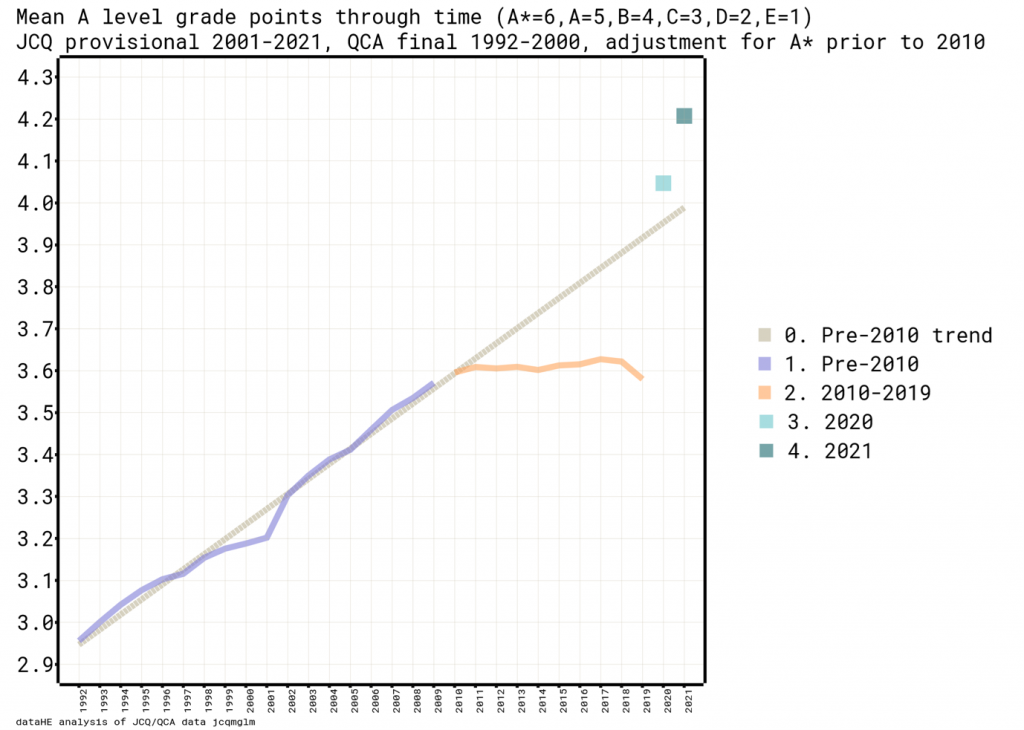
Whatever your views about grade inflation, and criterion vs norm-referencing, I was concerned to note differences in grade awards between boys and girls. Disparities between the sexes create different worries than, for example, gaps between independent and state educated, rich and poor, or North and South – gaps that we may not like, but largely understand. But boys and girls are more or less equally represented in all these groups; they go to the same schools and have the same teachers, so it is harder to pinpoint the causes of any gaps. The chart below shows the difference by sex in the elevation of A and A* grade awards in key subjects between 2019 and 2021. Notwithstanding the strange anomaly for most Languages where boys’ results are slightly more elevated, girls have enjoyed much more favourable grading across the board. Some of these are very large differences, for example in Mathematics, Further Mathematics, Physics, History and Geography.
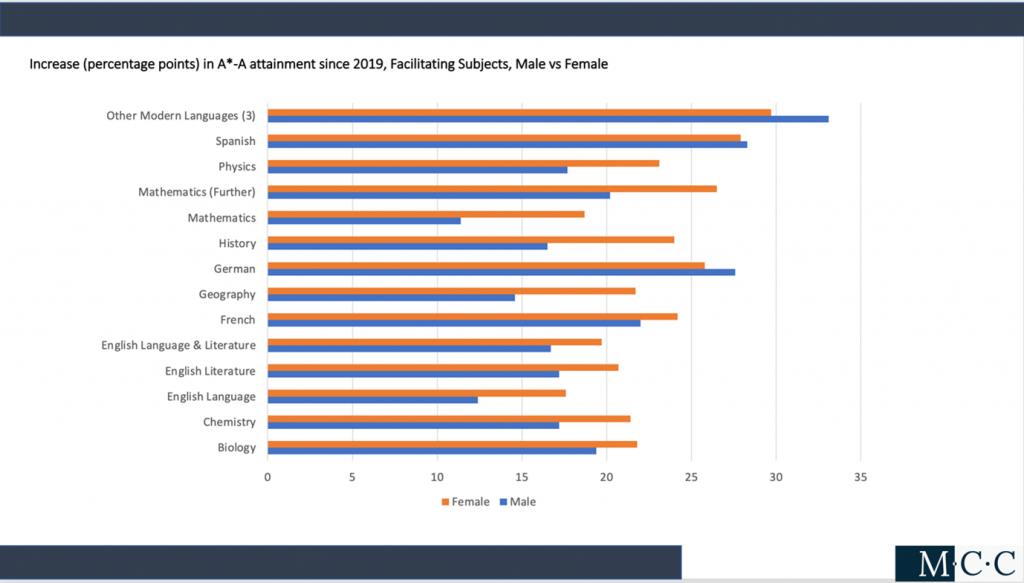
This goes further than the usual concerns about boys’ underachievement in education compared to girls and needs a convincing explanation to eliminate what seems, on the face of it, to indicate systemic bias against boys.
That aside, there has been no improvement in the share of A level entries for boys this year. Once again, 55% of all entries are for females (or 85,000 more A level entries for girls), meaning that boys are still 20 per cent less likely to be doing A levels than girls.
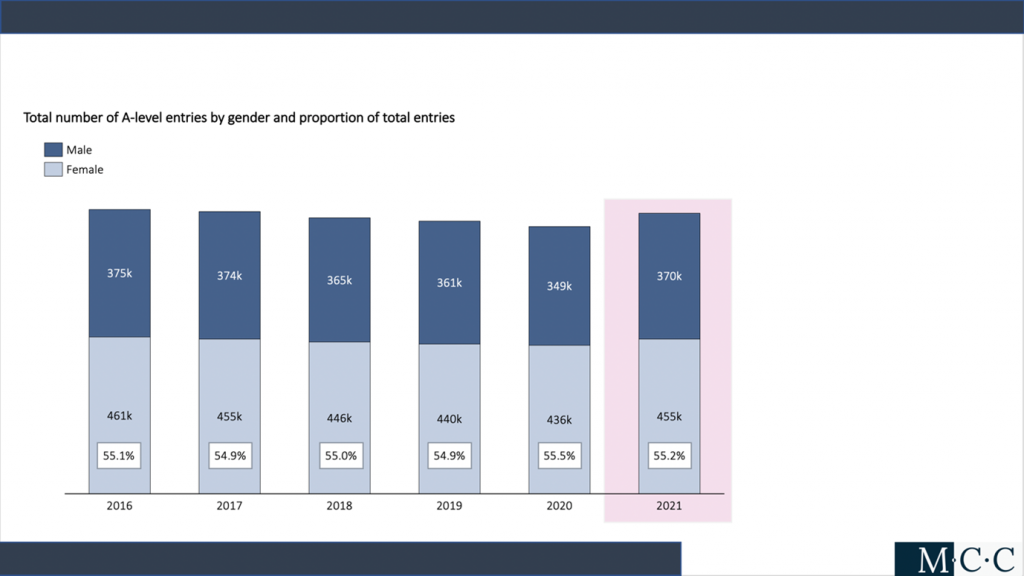
This translates across to over 35,000 fewer UK domiciled male school-leaver placed applicants showing on the UCAS data (as of 17 August). The 18-year-old female higher education entry rate is now around 43 per cent vs 32 per cent for males.
Over the years, I’ve been keeping an eye on subject preferences using ‘share of total A level entries’ as a more accurate measure than just raw numbers of entries, especially given the c.3 per cent increase in the population of 18-year-olds this year.
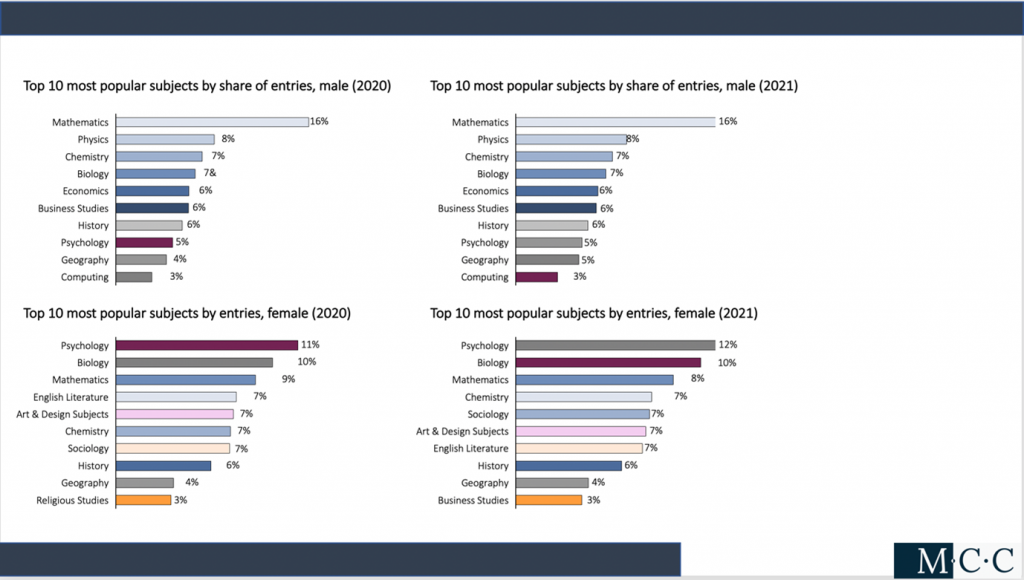
Mathematics remains the most popular A level subject overall, and by a country mile for boys. The males’ top ten subjects are virtually unchanged from last year. For girls, English Literature, which was as recently as 2016 their most popular subject, continues its slow slide down. It doesn’t even make the top ten for boys where it languishes down in the realms of Modern Foreign Languages for popularity.
What is happening to English A levels? The number of entries and the share of entries continues to fall across all versions of English A levels.
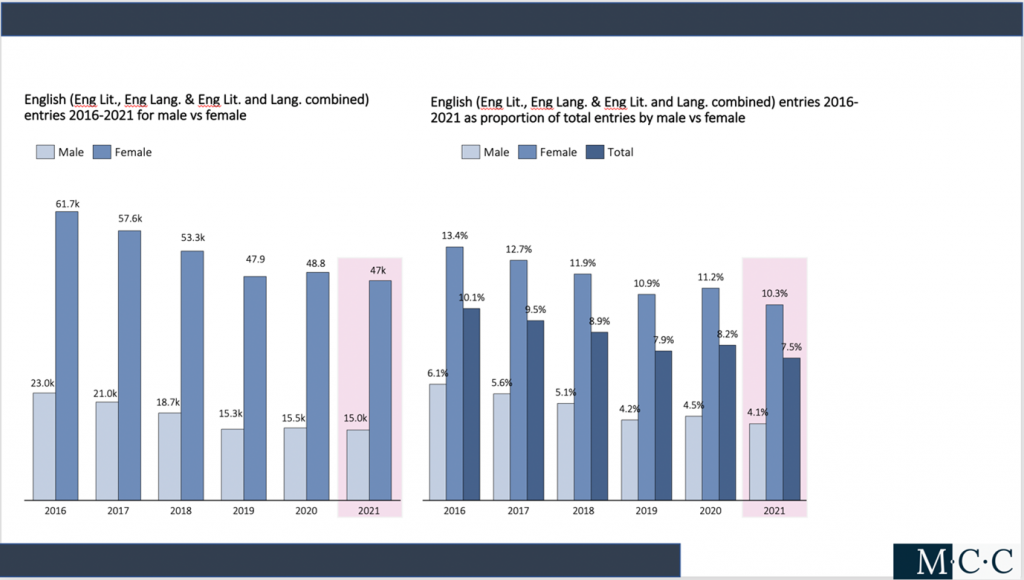
Policy makers might also worry that STEM subjects at A level are showing no signs of shifting in popularity. The share of entries has hovered around 37 per cent for the past four years and there remains a stubborn 17.5 percentage point gap between males and females.
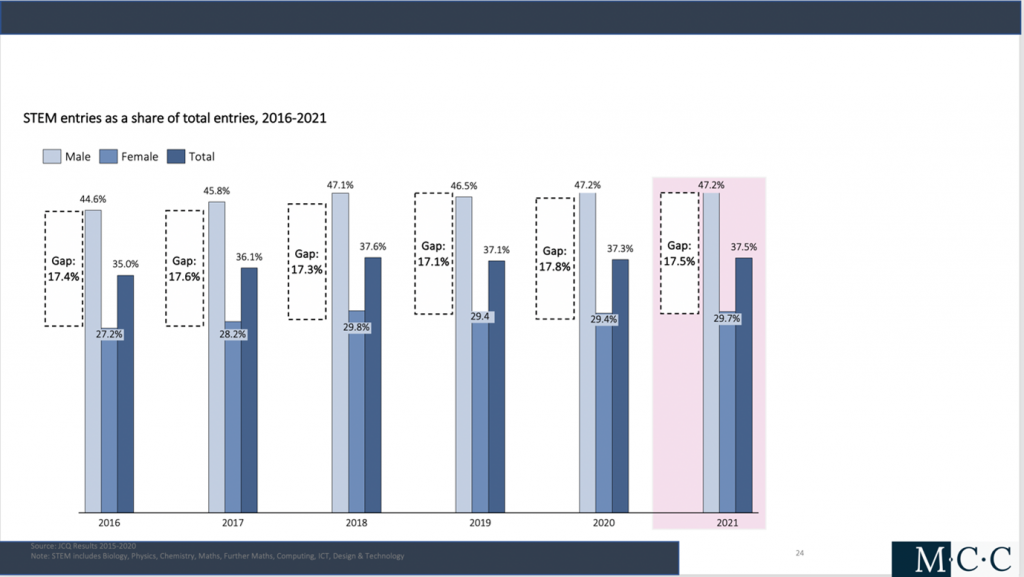
The share of entries for Physics for boys is around four times that for girls (8.5 per cent vs 2.1 per cent) while Biology continues to be dominated by the girls with a nearly 10 per cent share of entries vs 7 per cent for boys. It seems that Chemistry is the most equal science in terms of share of entries. Note, however, that because of more girls are undertaking A levels overall, there are over 5,000 more female Chemistry A level candidates than male.

At least there is no further decline in the share of entries for Modern Foreign Languages this year.
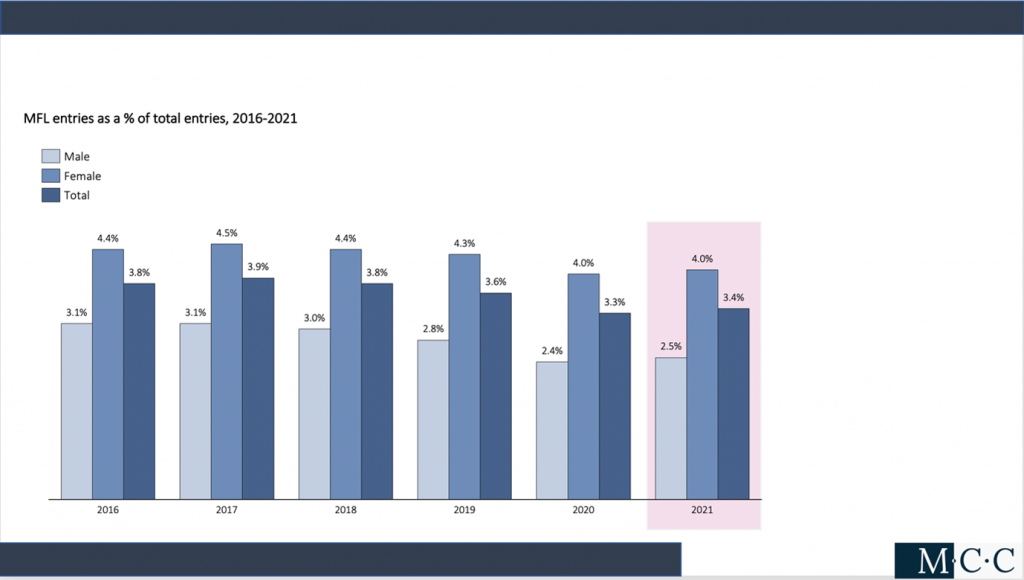
Some of HEPI’s previous work on the challenges faced by boys in can be accessed at https://www.hepi.ac.uk/2016/05/12/new-hepi-report-reveals-educational-underachievement-young-men-higher-education-calls-sector-tackle-problem/.
This blog was written by Mary Curnock Cook CBE, who is a former CEO of UCAS, the Chair of the new UPP Foundation Student Futures Commission and a HEPI Trustee. She can be found on Twitter at @MaryCurnockCook.










Responses